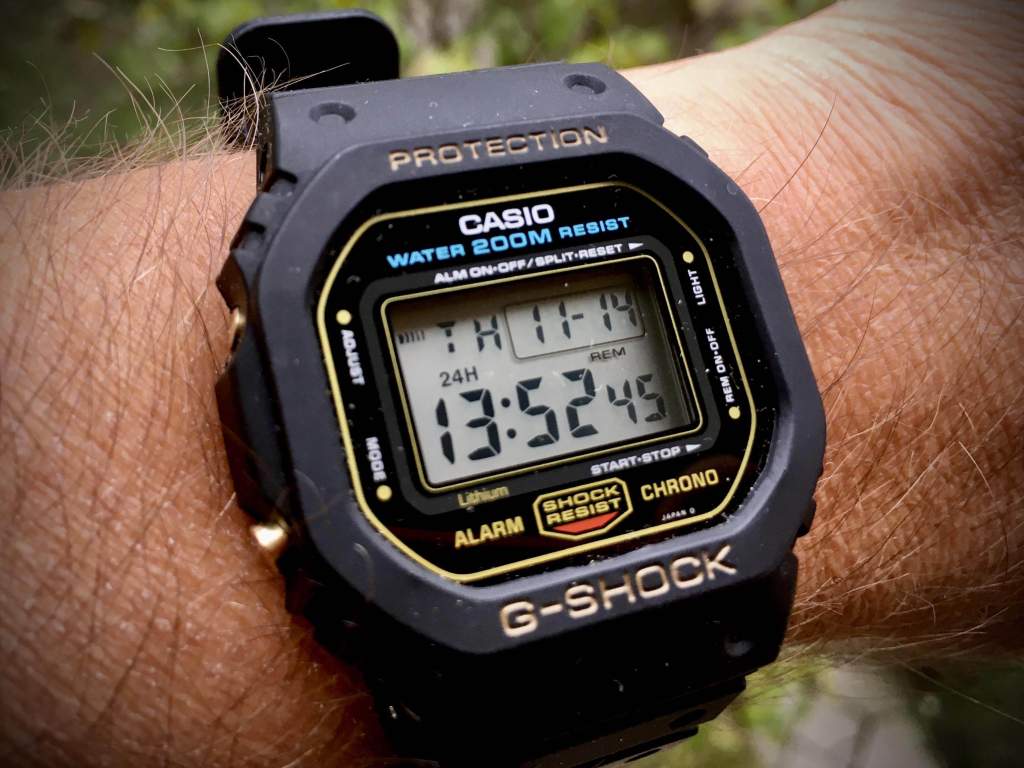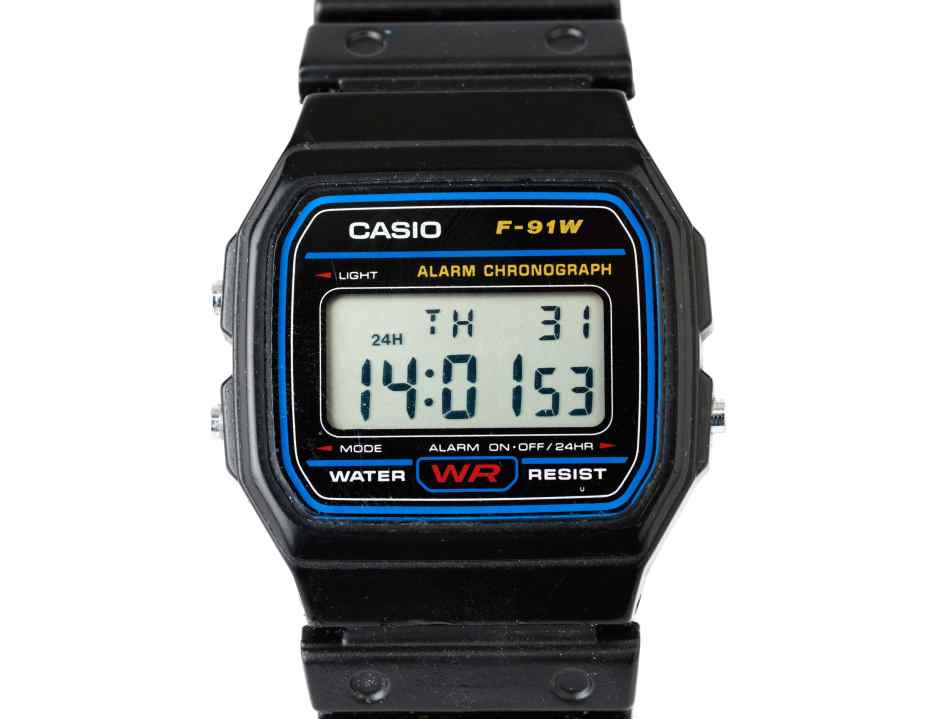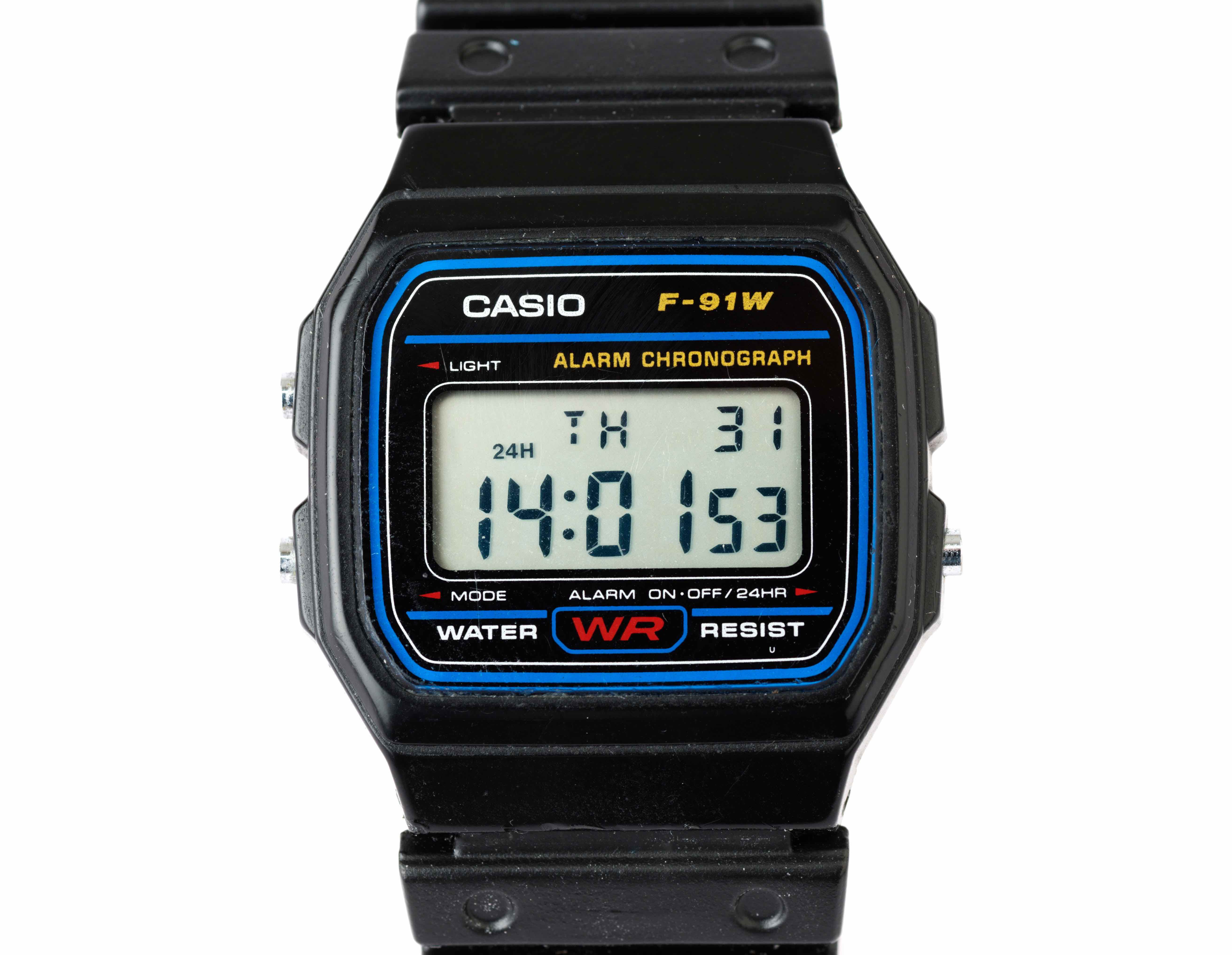Of all the accessories one might expect a celebrity with millions in the bank and army of stylists at their disposal to choose, a bargain watch is not the most obvious. Yet Casio timepieces – some of which sell for little as £10, and most of which cost under £50 – appear to have become something of a status symbol among a certain strata of the well-off and well-connected.
Take former Manchester United footballer Gerard Piqué (estimated net worth £66 million), who split up with pop star Shakira last year. Recently the Colombian singer, 45, released a ‘revenge’ single with lyrics ridiculing the retired Spanish player, her partner of 11 years, for his new relationship with a 23-year-old. The song went viral, particularly for its acerbic line ‘You traded a Ferrari for a Twingo. You traded a Rolex for a Casio’. It has been viewed more than 400 million times on YouTube.
Yet Piqué, 36, defended the watch with the force he’d once shown on the football pitch, posing with his Casio and claiming: ‘This watch will last a lifetime.’
Now, on any other matter I’d side with Shakira, who has lambasted Piqué for moving on to a woman half her age. But, as the proud owner of a lurid pink £14.99 Casio, which is one of my favourite possessions, I’m afraid her criticism of Casio, which launched its first electronic watch in 1974, is unwarranted. Hurtful, even.
Just ask British singer George Ezra, who was altogether more complimentary about the Casio in his 2014 pop song, ‘Cassy O’, in which the watch represents a girl he’s racing against time to win back: ‘I was ripping out the battery / I received myself a shock /And to add insult to injury / I could still hear tick and tock.’ Or Microsoft founder Bill Gates, who has owned a succession of budget Casio watches, including a £53 Casio Sports MDV106-1A that, with his estimated £107 billion fortune, he could buy two billion times over.
Then there’s Oscar nominee Kristen Stewart, who wore a £28 Casio LA11WB-1 to a Charlie’s Angels photocall in London in 2019; tennis champion Serena Williams, who won the 2012 Wimbledon final wearing a £15.95 Casio computer watch; and singer Ed Sheeran, who debuted his 2020 single, ‘Singer’, in a £58 Casio G-Shock. A Casio even featured in Everything Everywhere All at Once, which dominated at Sunday night’s Oscars, taking seven awards including Best Picture (Ke Huy Quan, whose character Waymond Wang wears it in the film, apparently even received a Casio as a wrap gift).
The F-91W, favoured by Barack Obama (and me), is the most popular Casio of all, shifting a reported three million a year
The same version that sits on my wrist, the F-91W, was once worn by Barack Obama. With its clunky rectangular case and basic digital screen, it is the most popular Casio of all, shifting a reported three million a year. I’ll admit it is not the most obviously desirable purchase, and the fact US military intelligence officials have identified it as a watch Al Qaeda terrorists use to construct time bombs hardly adds to the allure.
So why the appeal, to civilians and celebrities alike? Perhaps the stars are trying to show that really, they’re just like us; or their choice is a tacit humblebrag: ‘Look how fabulous I am, being able to pull off a horological eyesore.’
In an uncertain economic climate, those who can afford statement pieces might also be deterred by the scorn unleashed on high-profile Rolex wearers – such as Education Secretary Gillian Keegan, who was accused by unions of a ‘staggering lack of empathy’ in November when she said there was ‘no point’ in nurses striking while wearing a £10,000 Rolex Datejust 31 – and again last month when she wore it as she told striking teachers to be ‘realistic’ in their pay demands.
Or they might be mindful of their safety, given the ‘Rolex rippers’ – a female gang of thieves who pose as charity workers before tearing the watches off the wrists of wealthy owners – have struck dozens of times in the past two years.

But I have another theory. Seven years after the launch of the Apple Watch, perhaps we’re all just tired of extortionate wearable tech that might be able to read our blood oxygen level but leaves us checking our wrists under the table at dinner because it’s so hopelessly addictive. (The Apple founder, the late Steve Jobs, famously wore a cheap Seiko.) According to the International Data Corporation, the global wearables market declined for the first time during the first quarter of last year. Meanwhile, John Lewis’s annual ‘Shop, Live, Look’ report last year revealed that sales of Casio watches had increased by 81 per cent.
I might not be able to use my waterproof Casio model, launched in 1989, to pay for my groceries, but it has a stopwatch, an alarm clock and light. And what it lacks in tech, it more than makes up for in 1990s nostalgia, emblematic as it is of an era when hair scrunchies and the Spice Girls were all the rage, and watches stuck to what they were designed to do: tell the time.
Having tracked down a vintage Casio Twin Graph Watch, similar to the one he’d owned at school, American singer and Jennifer Aniston’s ex John Mayer, my age at 44, recalled on Instagram how he would ‘stare at it to pass the time in class. Do you know that before Instagram we just stared at stuff?’. Indeed.







Comments